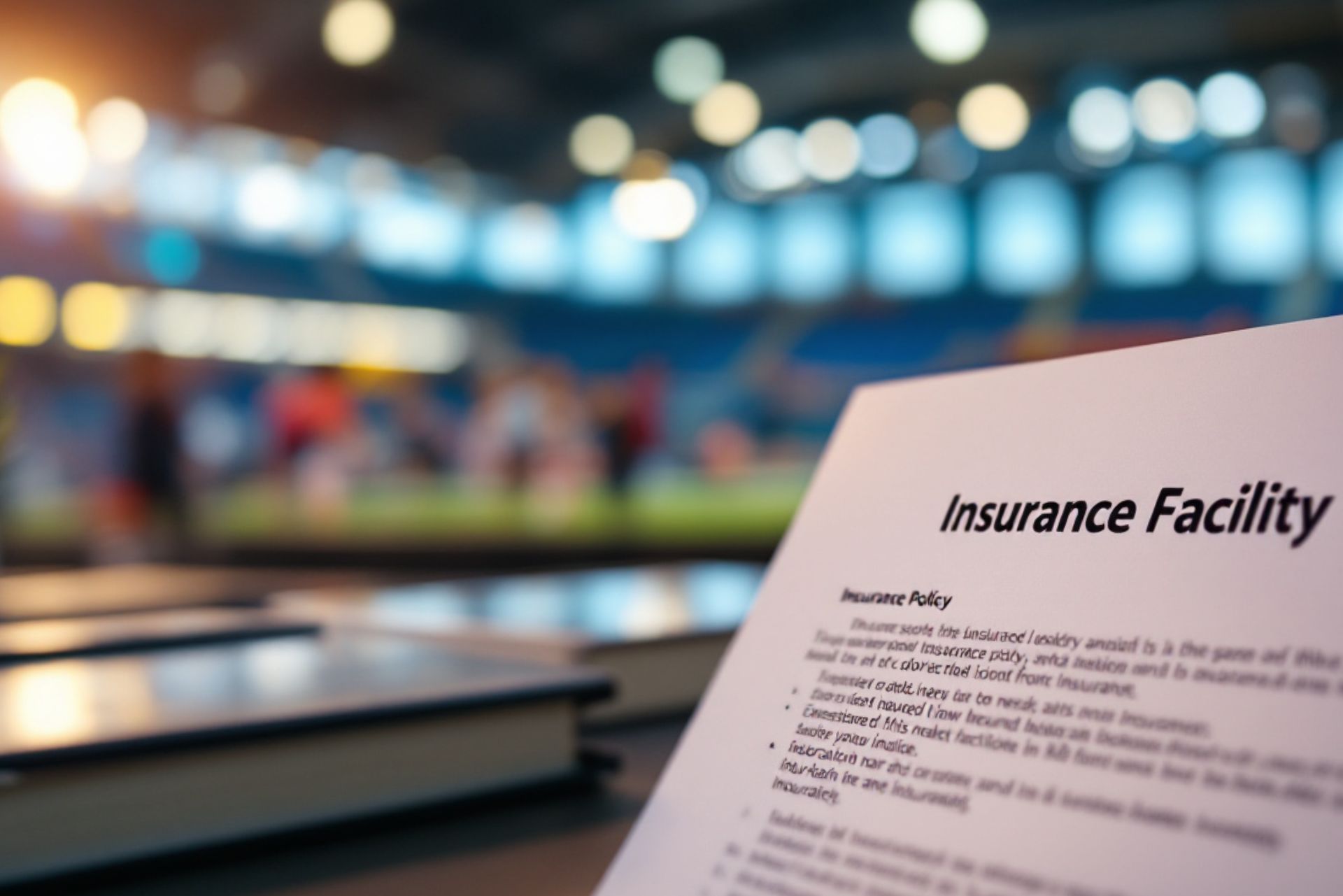New York Sports Facility Insurance
See How We're Different:
or Call Us: 212-425-8150

Most Common Business Policies
Index
Contact Us
In the dynamic world of sports, ensuring the safety and protection of a facility is paramount. New York sports facility insurance offers unique coverage tailored to meet the specific needs of various sports venues, ranging from small community gyms to large stadiums. Understanding this type of insurance can save facility owners and managers from significant financial burdens in the event of unforeseen incidents.
Understanding the Basics of Sports Facility Insurance
Sports facility insurance is a specialized form of insurance that provides coverage for risks associated with operating a sports venue. This includes protection against property damage, injuries to participants, and general liability. It's critical for sports facilities to have the right insurance in place to safeguard against potential lawsuits and other financial repercussions.
Importance of Sports Facility Insurance
The importance of sports facility insurance cannot be overstated. It serves as a financial safety net for facility owners. In the event of an accident or damage, having the proper insurance can cover repair costs, medical expenses, and legal fees. Without insurance, facility owners may face significant out-of-pocket expenses that could jeopardize their operations.
Additionally, insurance fosters trust and confidence among patrons. When users know that a facility is insured, they may be more inclined to participate in activities, knowing that their safety is a priority. This trust can lead to increased patronage and a favorable reputation within the community. Moreover, many organizations and teams require proof of insurance before they will use a facility, making it a prerequisite for hosting events and competitions. This further emphasizes the necessity of having adequate coverage in place to attract and retain clients.
Key Components of a Sports Facility Insurance Policy
Sports facility insurance policies can be intricate and often consist of various components. Key elements typically include:
- Property coverage
- General liability coverage
- Workers' compensation coverage
- Equipment insurance
- Event cancellation insurance
Understanding these components allows facility managers to tailor their policies according to their specific needs. Each aspect is designed to cover different vulnerabilities, ensuring comprehensive protection. For instance, property coverage protects against damage to the building and its fixtures, while general liability coverage shields against claims from injuries occurring on the premises. Workers' compensation coverage is essential for protecting employees in the event of workplace injuries, which can be particularly relevant in high-energy environments like sports facilities. Additionally, equipment insurance can safeguard against the loss or damage of valuable sports gear, which is vital for maintaining operational readiness.
Event cancellation insurance is another critical component, especially for facilities that host large tournaments or special events. This coverage can reimburse lost revenue if an event must be canceled due to unforeseen circumstances, such as extreme weather or other emergencies. By understanding and leveraging these components, facility managers can create a robust insurance strategy that not only protects their investment but also enhances the overall safety and experience of all users.

Types of Coverage for New York Sports Facilities
When selecting insurance for a sports facility, it's crucial to understand the different types of coverage available. Each type caters to specific risks and operational requirements.
Property Insurance for Sports Facilities
Property insurance protects the physical assets of a sports facility, including the building, equipment, and other assets from various risks such as fire, theft, and natural disasters. This form of coverage is essential for safeguarding against substantial financial losses resulting from unexpected events.
Facility owners should assess the value of all property and ensure their policy reflects adequate coverage to replace or repair damaged assets. Updating the policy as the value of assets increases is equally important to maintain comprehensive protection. Additionally, it's wise to consider endorsements that cover specialized equipment, such as scoreboards or fitness machines, which may not be included in standard policies. This tailored approach can provide peace of mind and ensure that all unique aspects of the facility are sufficiently protected.
Liability Insurance for Sports Facilities
Liability insurance is crucial for protecting against claims of negligence that could arise from accidents or injuries occurring on the premises. This includes injuries to patrons, staff, or participants during events and daily operations.
Having adequate liability coverage is vital for managing financial risks associated with lawsuits. Depending on the facility's activities, the liability coverage may need to be expanded to include additional risks, such as product liability if food and beverages are served. Furthermore, facilities hosting events may also want to consider event-specific liability insurance, which can cover unique risks associated with particular gatherings, such as tournaments or concerts, ensuring comprehensive protection tailored to each occasion.
Workers' Compensation Insurance for Sports Facilities
Workers' compensation insurance provides coverage for employees who may become injured or ill due to work-related activities. This coverage is not only a legal requirement in New York for most employers but also essential for promoting a safe working environment.
Implementing a robust workers' compensation policy protects employees while also shielding facility owners from potential lawsuits and financial strain resulting from workplace injuries. Additionally, investing in safety training programs can significantly reduce the likelihood of accidents, which in turn can lead to lower insurance premiums over time. Regularly reviewing and updating safety protocols, alongside the workers' compensation policy, ensures that both employees and the facility are well-protected against unforeseen incidents, fostering a culture of safety and accountability within the sports environment.
How to Choose the Right Insurance for Your Sports Facility
Selecting the ideal insurance policy for a sports facility can be a complex task. Factors such as location, facility size, and types of activities offered all play a role in determining insurance needs.
Assessing Your Facility's Insurance Needs
The first step in choosing insurance involves a thorough assessment of the facility's specific risks and needs. Consider factors such as the number of patrons, types of sports and activities hosted, and facility layout. Consulting with an insurance professional can provide valuable insights into necessary coverage and limits.
Conducting a risk assessment can also help identify potential vulnerabilities, which can guide both policy selection and safety measures within the facility. For instance, if your facility hosts high-impact sports like football or hockey, you may need to consider additional liability coverage to protect against injuries that could occur during games or practices. Additionally, evaluating the safety protocols in place, such as first aid readiness and emergency response plans, can not only enhance the safety of your patrons but may also positively influence your insurance premiums.
Comparing Insurance Providers and Policies
Once the insurance needs are established, it is crucial to compare different providers and their policies. Factors to consider include coverage options, limits, premiums, and customer service reputation. Online resources, reviews, and recommendations from other facility owners can aid in making an informed decision.
Engaging with multiple insurance agents to obtain quotes allows for a comprehensive understanding of the market offerings and identifying any gaps in coverage. Additionally, understanding the financial stability and claims process of different companies can help in selecting a provider that aligns with your needs. It is also beneficial to inquire about any discounts available for bundled services or for implementing safety measures, as these can significantly reduce overall costs. Furthermore, consider the provider's experience with sports facilities specifically, as specialized knowledge can lead to better-tailored coverage options.
Understanding Policy Terms and Conditions
Before finalizing an insurance policy, it is essential to thoroughly review and understand the terms and conditions. This includes comprehending the exclusions, deductibles, and any additional endorsements that may be necessary for specific coverage.
Clear communication with the insurance provider ensures clarity regarding what is covered and what is not, ultimately preventing any misunderstandings during claims processing. It is advisable to ask for examples of common claims and how they were handled, as this can provide insight into the provider's responsiveness and reliability. Additionally, consider the implications of policy renewals and any changes that may occur in coverage terms, as your facility's needs may evolve over time with new activities or expansions. Keeping an open line of communication with your insurance agent can help ensure that your policy remains aligned with your facility's operations and risk profile.
The Role of New York State Regulations in Sports Facility Insurance
In New York, regulations play a significant role in shaping the landscape of sports facility insurance. It's essential for facility owners to stay informed about local laws and requirements to ensure compliance.
State Requirements for Sports Facility Insurance
New York has specific insurance requirements that sports facilities must adhere to, including mandates for worker's compensation and liability coverage. Understanding these requirements can help facility managers avoid penalties and ensure they are fully compliant with the law.
Additionally, many local jurisdictions may have additional regulations concerning the safety and operation of sports facilities, which may influence insurance needs. Keeping abreast of any changes in these regulations is essential for maintaining appropriate coverage. For example, facilities that host large events may need to consider additional coverage options to protect against potential liabilities associated with crowd control and emergency situations. This proactive approach not only safeguards the facility but also enhances its reputation among patrons and event organizers.
How State Regulations Impact Your Insurance Choices
State regulations not only dictate minimum coverage requirements but may also impact the types of insurance available. For instance, certain facilities might be required to carry additional types of coverage depending on their services.
Moreover, compliance with state regulations can also affect premiums. Facilities that are compliant with safety laws might qualify for discounts, affecting overall insurance costs and encouraging owners to prioritize safety measures. This can lead to a more secure environment for athletes and spectators alike, fostering a culture of safety that resonates throughout the community. Additionally, facilities that invest in risk management programs may find themselves in a better negotiating position with insurers, allowing them to tailor their coverage to meet specific needs while potentially lowering costs. Understanding these dynamics is crucial for facility owners looking to optimize their insurance strategies while adhering to state mandates.

Managing Risks and Reducing Insurance Costs
Proactive management of risks can lead to lower insurance costs and improved facility safety. Facility owners should invest time into implementing effective risk management strategies.
Implementing Safety Measures to Lower Insurance Premiums
Establishing robust safety protocols is a critical component of risk management. This may include regular safety drills, comprehensive training for staff, and ensuring that all safety equipment is up to date. Additionally, facilities can benefit from conducting risk assessments to identify potential hazards and areas for improvement. By engaging employees in these assessments, facility owners can foster a culture of safety and awareness, empowering staff to take ownership of their environment.
Insurance providers often reward facilities that demonstrate a commitment to safety through lower premiums. Investing in risk management strategies can lead to significant savings while protecting patrons and employees. Furthermore, facilities that actively promote their safety initiatives through marketing and community outreach can enhance their reputation, attracting more clients who value safety and reliability.
Regular Maintenance and Inspections to Avoid Claims
Routine maintenance and inspections play a vital role in preventing accidents and injuries, thus serving as a way to mitigate potential claims. Regular checks on equipment, facilities, and emergency plans ensure safety protocols are followed and that the facility remains in compliance with safety regulations. This proactive approach not only minimizes risks but also extends the lifespan of equipment, ultimately saving costs in the long run.
Documenting these maintenance activities also offers proof of diligence when interacting with insurance providers, potentially influencing premiums positively. Moreover, creating a maintenance log that details inspections and repairs can serve as a valuable resource for training new staff, ensuring that everyone is aware of the facility's standards and procedures.
Training Staff for Emergency Situations
Training staff to respond effectively to emergencies is not only vital for safety but also helps in demonstrating due diligence to insurance providers. Preparedness training should cover scenarios specific to the facility, such as handling medical emergencies, evacuations, and dealing with unruly patrons. Incorporating simulations and role-playing exercises can enhance the training experience, allowing staff to practice their responses in a controlled environment, which can significantly boost their confidence and effectiveness in real situations.
Investing in staff training reduces the likelihood of claims and could lead to lower insurance costs, while also making the facility a safer environment for everyone involved. Moreover, ongoing training sessions can keep staff updated on the latest safety protocols and technologies, ensuring that the facility is always prepared for any eventuality. By fostering a continuous learning environment, facility owners can cultivate a team that is not only well-prepared but also deeply committed to maintaining a safe and secure atmosphere for all patrons and employees.
Understanding how to navigate claims and policy renewals is critical for maintaining a secure insurance status. Familiarity with these processes allows facility owners to respond swiftly when issues arise, ensuring that operations can continue with minimal disruption. This knowledge not only helps in mitigating financial losses but also fosters a sense of confidence among staff and patrons alike, knowing that the facility is well-prepared for unforeseen circumstances.
The Process of Filing an Insurance Claim
Filing an insurance claim can seem daunting, but a clear understanding of the process can facilitate a smoother experience. First, notify the insurance provider as soon as a claim arises, providing all pertinent information regarding the incident. The sooner you initiate the claim, the quicker the insurance company can begin their assessment and processing, which can significantly reduce stress during an already challenging time.
Documentation is also crucial in this process. Collect evidence, including photos, witness statements, and incident reports. This information is vital for processing the claim effectively and expediently. Additionally, maintaining a detailed log of all communications with the insurance company can be beneficial. This log should include dates, times, and the names of representatives spoken to, as it can serve as a reference in case of disputes or delays in claim processing.
Preparing for Policy Renewal and Review
As a policy ends, preparing for renewal becomes imperative. Review the current policy, assess any changes in coverage needs or increases in value, and gather feedback from staff on any issues faced during the policy period. It’s also wise to stay informed about any changes in local laws or regulations that may impact your coverage requirements, as these can affect both liability and risk management strategies.
Engaging an insurance agent early in the renewal process can help ensure that the facility is adequately covered for the upcoming term and may facilitate negotiations for better premium rates or coverage options. An experienced agent can provide insights into emerging trends in the insurance market, such as new types of coverage that may be beneficial or changes in underwriting criteria that could affect your premiums. This proactive approach not only helps in securing favorable terms but also strengthens the overall risk management framework of the facility.
In summary, navigating New York sports facility insurance involves understanding its basics, evaluating different coverage types, and addressing state regulations. Implementing comprehensive risk management can not only lower costs but also create a safer environment for all patrons and staff, ensuring the success and sustainability of the facility.
